Sand in the well: causes of occurrence and methods of
Dusting is one of the most common problems in operating shallow sources. We will tell you why there is water with sand from the well, and we will give a number of tips and show how to remove sand from the well.
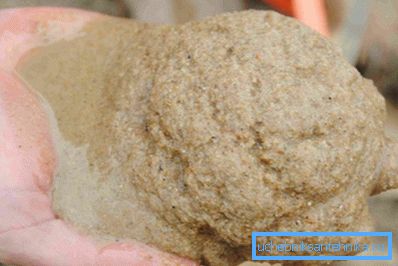
Well spraying
General information

The most common source of water on the site is a sand well to the water. It is called sandy because the aquifer consists of sand with small inclusions of clay, stones and other rocks. Water freely penetrates and moves through the layer of sand, gradually being filtered.
Naturally, along with the flow of water, sand movement can occur, which results in the ingress of grains of sand into the liquid intake zone. That is why there is installed a filter in the form of steel mesh and wire winding, the size of the cells which does not allow sand particles to enter the pipeline system.

However, in practice, breakdowns, depressurization of casing, leakage of super water, filter damage and other phenomena occur that lead to the fact that the well drives sand into the water supply system to consumers. Also, the reason for this may be incorrect installation of the structure or incorrectly selected filter for the well.
As a result of sand entering the system, a number of undesirable processes occur:
- The system of fine filtration of a liquid begins to get clogged up, and this happens much faster than provided by the regular mode of operation of the filter elements. As a result, you will have to change filters too often;
- The sand particles, being abrasive elements, gradually wear out the impeller of the pump, and the equipment, the price of which is quite high, eventually fails;
- The pipeline is clogged, which leads to a decrease in its transmittance and increase in weight;
- The sand begins to fill the mixers and siphons of sanitary appliances, gradually bringing them down;
- Expansion tanks and automatics are clogged;
- Larger and heavier grains of sand settle to the bottom of the well, fill the sump, gradually rise to the filter zone and fill it. In the end, the access of water to the well is hampered, and its productivity decreases;
- Long-term pumping of sand from the aquifer leads to a decrease in the life of the well.

Note! With a properly selected and installed filtering mesh, sand accumulation process occurs very slowly, at least 3 - 5 years. Sometimes there are serviceable objects operating for 40 years without flushing.
Causes and Diagnosis
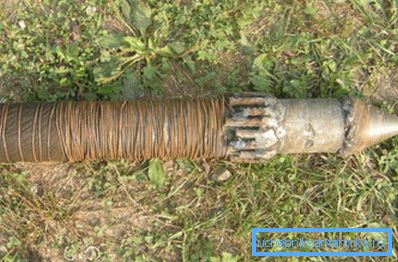
So, if the well is clogged with sand, it would be nice to find out what caused this phenomenon, and then you can think about how to fix it.
To do this, we list the main causes of garbage entering the system:
- The filter screen was damaged during installation.. If less than 3 years have passed from the completion of drilling to the start of sanding, and the sand does not end when washing, it is most likely that the mesh was damaged during the installation of the filter tube. Another sign is the presence of sand grains of different fractions, from the smallest grains of dust to pebbles;
- The sand pulls through the working mesh. In an excellent way (that is, according to SNiP 2.04.02-84 “Allowances for designing structures for groundwater abstraction”), the grid is selected on the basis of fractional analysis of sand, but in practice it is rarely done. As a result, the well is clogged with sand of the same average fraction and begins to sand “emissions”, after which its work is temporarily restored;
- The gravel filter at the bottom of the face began to let in sand: this happens when the pipe is not welded tightly with a steel butt, and is installed on a gravel pad. Gradually, the grid is calcinated, and its resistance becomes less than the resistance of the gravel plug, and impurities of various fractions begin to penetrate into the system;
- Too powerful borehole pump for water with sand can create a situation where the resistance even of a clean mesh filter will be more resistance of a gravel plug. The sand begins to pull in, and the filter zone is filled with it up to the height of the pump;
- A poorly closed mouth during a flood or heavy rain can skip the water line inside the column, and it will bring sand into the system.. Here the symptoms are similar to the symptoms described in paragraph 2;
- Water from the well goes with sand as a result of casing rotting from corrosion, or poorly welded, as well as under-twisted joints between casing.. Through the fistula formed in the column, debris and impurities freely enter the system, and their material and fractional composition may be the most diverse;
- The hole was blocked with sand because of the rotten and broken mesh of the filter, or as a result of damage to the clamps, fasteners, soldering or breaking the wire that presses the mesh. In this case, there is a sharp inhibition of particles of different fractions, and recovery is often impossible.
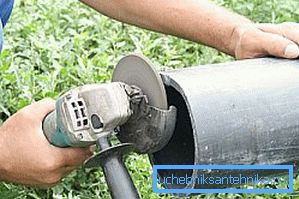
Note! Restoring a sand well is often impractical, since the cost of repair may exceed the cost of drilling a new source. The same can be observed in the case of artesian wells.
Repairs

For those who want to know how to remove the sand from the well with their own hands, we have compiled a step-by-step instruction. Here we are talking about scouring for natural reasons.
If the cause of the source sanding is a breakdown or an accident, then it must be eliminated before the procedure described:
- Submersible pump withdrawn from the barrel;

- Take another pump (if you don’t know which is the best pump for a well with sand - use a vibration type “Kid”) and lower it into the barrel. Suspend at a distance of 15 - 25 cm from the level of sand or silt;
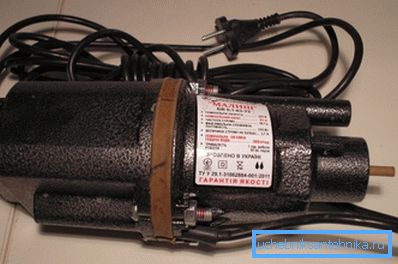
- Next to the well, we place a 200-liter barrel, in the upper part of which we fix the bucket so that its top is slightly above the water level, and at the bottom of the bucket we make perforations and we fit it with a net of cloth or other filtering material;

- We take the surface self-priming pump of the “Kama” type, lower the water intake hose into the bucket, and feed hose to the bottom of the well. The end of the hose weights, so that it is easy to sink and keep the hose smooth. If the diameter of the casing is much larger than the diameter of the pump, then we place the end of the hose below the pump, at the very bottom, if the pipe is narrow, then it is higher;
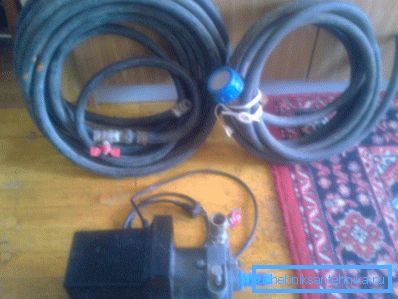
- We fill the barrel with water to the very top (if the flow rate allows, this can be done by turning on the submersible pump) and turn on the water supply pump to the well; the submersible pump should work simultaneously with it. The pressure from the hose will lift the sand from the bottom of the face, and the submersible pump will tighten it to the surface and leave it in the barrel;

- We continue cleaning until the liquid coming from the building’s trunk becomes completely transparent.

Note! If the water goes too turbid and heavy, slightly raise the delivery hose above the bottom of the face. Pump pumping turbid water should be periodically turned off and cleaned.
Conclusion
The appearance of sand in the well is a bad sign, the causes of which can be determined by a number of symptoms. We showed what to do - if the source was clogged or grains of sand were found in the water and demonstrated the simplest and most effective method of flushing the system. The video in this article will be an additional guide to the elimination of impurities in drinking water.